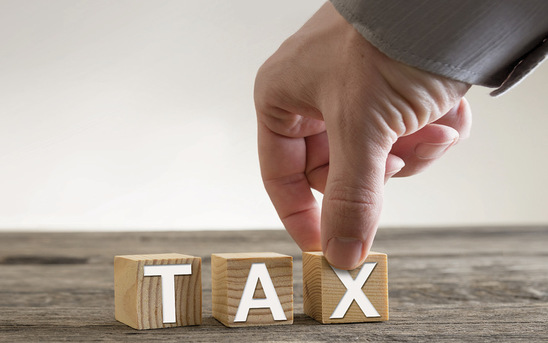The advantages of investing early

You may have heard it said, “No risk, no reward.” But did you know that time can actually decrease your risk while increasing your reward?
Investing: Risky business?
When some people think of investing, they focus on the potential for great rewards—the possibility of picking a winning share that will increase in value over time.
Other people focus on the risk—the possibility of losing everything in a market crash or on a bad stock pick.
Who’s right? Well, it’s true that all investing involves some risk. It’s also true that investing is one of the best ways to build your wealth over time.
In fact, there’s typically a direct relationship between the amount of risk involved in an investment and the potential amount of money it could make.
Different types of investments fall all along this risk-reward spectrum. No matter what your goal is, you can find investments that could help you reach your goal without taking on unnecessary risk.
Time is on your side
Here’s the secret ingredient that can make investments less risky: time.
But there’s a caveat.
If you invest in just a handful of investments or only within the same industry, time won’t necessarily make your portfolio any safer.
The reason it works for diversified investment portfolios that incorporate a range of asset classes (i.e. bonds), regions and markets is that over time, there tend to be more “winners” than “losers.” And the investments that gain money offset the ones that don’t do as well.
The more time you have, the more you benefit from compounding
Not only can the passage of time help lower your investment risk, it can potentially increase the rewards of investing.
Imagine you place one checker on the corner of a checker board. Then you place two checkers on the next square and continue doubling the number of checkers on each following square.
If you’ve heard this brainteaser before, you know that by the time you get to the last square on the board—the 64th—your board will hold a total of 18,446,744,073,709,551,615 checkers.
While there’s no guarantee you can double your money every year, the principle behind this – known as “compounding” – is important to understand that when your starting amount is higher, your increases are higher too. And over time, it can add up to be a material increase.
For example, if you earn 6% on a $10,000 investment, you’ll make $600 in the first year. But then you start the second year with $10,600—during which your 6% returns will net you $636. This is a hypothetical example that does not take into consideration investment costs or taxes.
In the 20th year of this example, you’ll earn more than $1,800—and your balance will have increased more than 200%.
A caveat: reinvesting is key
If you take your earnings out of your account and spend them every year, your balance will never get any bigger—and neither will your annual earnings. So instead of making more than $20,000 over 20 years in the hypothetical example above, you’d only collect your $600 every year for a total of $12,000.
If you instead leave your money alone, your “earnings on earnings” will eventually grow to be larger than the earnings on your original investment – and that’s the power of compounding!
Understanding long-term investing can be confusing, that is why we are here to help. Contact us today to find out more.
Source: Vanguard
Reproduced with permission of Vanguard Investments Australia Ltd
Vanguard Investments Australia Ltd (ABN 72 072 881 086 / AFS Licence 227263) is the product issuer. We have not taken yours and your clients’ circumstances into account when preparing this material so it may not be applicable to the particular situation you are considering. You should consider your circumstances and our Product Disclosure Statement (PDS) or Prospectus before making any investment decision. You can access our PDS or Prospectus online or by calling us. This material was prepared in good faith and we accept no liability for any errors or omissions. Past performance is not an indication of future performance.
© 2022 Vanguard Investments Australia Ltd. All rights reserved.
Important:
Any information provided by the author detailed above is separate and external to our business and our Licensee. Neither our business nor our Licensee takes any responsibility for any action or any service provided by the author. Any links have been provided with permission for information purposes only and will take you to external websites, which are not connected to our company in any way. Note: Our company does not endorse and is not responsible for the accuracy of the contents/information contained within the linked site(s) accessible from this page.








